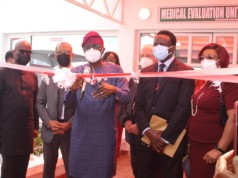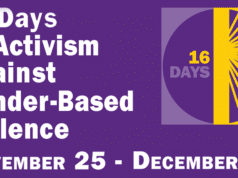Approximately 9.4 million people do not know they are HIV positive The acquired immunodeficiency syndrome (AIDs) was first recognized in 1981, although the earliest documented case of HIV infection has been traced to a blood sample from the Democratic Republic of Congo in 1959.
AIDs is caused by the human immunodeficiency virus (HIV), which progressively impairs cellular immunity.
In 2011 it was estimated that there were 34.2 million people living with HIV/AIDS, 2.5 million new infections and 1.7 million deaths. Globally, new infections have declined by 20% over the last 10 years.
Despite these important epidemiological data, HIV remains an important cause of death globally and has caused 30 million deaths since its inception. Eswatini a country in South Africa is believed to have the largest cases in relations to population as 1 out of every 4 adults is infected.
Virology/Immunology
HIV is an enveloped ribonucleic acid (RNA) retroviral from the lentivirus family. After mucosal exposure, HIV is transported to the lymph nodes via dendritic cells, where infection becomes established.
This is followed by viraemia and dissemination to lymphoid organs, which are the main site of viral replication.
Diagnosis and Investigation.
Globally, the trend is towards universal HIV testing, rather than testing patients at high risk or those with manifestation of HIV infection only.
HIV is diagnosed by detecting host antibodies either by using rapid point-of-care tests or in the laboratory, where enzymes-linked immunosorbent assay (ELISA) test are usually done. Western blot assays can also be used to confirm infection, but they are expensive and sometimes yield indeterminate results.
Viral Load and CD4 counts.
The CD4 count is the most clinically useful laboratory indicator of the degree of immune suppression and is used, together with clinical staging, in decisions to start ART (Anti-retroviral therapies) and prophylaxis against opportunistic infections, and in differential diagnosis of clinical problems.
The level of viraemia is measured by quantitative PCR of HIV-RNA, known as the viral load.
High viral load value (>100,000 copies/mL) this set of people experience rapid decline in CD4 count
Low viral load value (<1000 copies/mL) usually have slow or no decline in CD4 count.
There is little sense in repeated measurements of viral load before starting treatment, as viral loads remain at ball relative stable plateau after primary infection.
Clinical features of Primary Infections
- Fever
- Maculo-papular rashes
- Pharyngitis
- Lymphadenopathy
- Myalgia/arthralgia
- Diarrhoea
- Headache
- Oral and genital ulceration
- Meningo-encephalitis
- Bell’s palsy.
CD4 count and risk of Common HIV-associated diseases.
When <500 cells/mm3
Tuberculosis, Bacteria pneumonia, Herpes zoster, Oropharyngeal candidiasis, Non-typhoid salmonellosis, Kaposi’s sarcoma, Non-Hodgkin lymphoma, HIV-associated idiopathic thrombocytopenic purpura.
When <200 cells/mm3
Pneumocystis jirovecii pneumonia, Chronic herpes simplex ulcers, Oesophageal candidiasis, Isospora belli diarrhoea, HIV wasting syndrome, HIV-associated dementia, Peripheral neuropathy, Endemic mycoses
When <100 cells/mm3
Cerebral toxoplasmosis, Cryptococcal meningitis, Cryptosporidiosis and microsporidiosis, Primary CNS lymphoma, Cytomegalovirus, Disseminated Mycobacterium avium complex, Progressive multifocal leucoencephalopathy.
Prevention of HIV
- Sexual education programs in schools and 1 on 1 physician clinical advise to patients
- Easily accessible voluntary counseling and testing centers
- Promotion of safer sex approaches (fewer sexual partner, Condoms use etc.)
- Male circumcision
- Education /training: Universal precautions, need stick injury avoidance
- Post exposure prophylaxis
- Hotline and emergency number to call when in doubt of statues.
Above all my friends, fellow colleagues, doctors, distinguished professors, it is all good and expedient to KNOW YOUR STATUE not just that of you, but also that of your partner, husband, wife and children.
Dr Obisanya Olawale Princewill, DCM, DHOM, DNM (Member, Nigerian Council of Physicians of Natural Medicine).
Lecturer, Lagos State College of Health.











